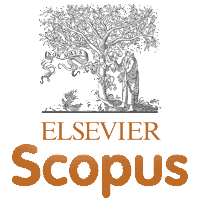AN EFFICIENT FINGERPRINT IMAGE ENHANCEMENT TECHNIQUE USING ENHANCED DEEP U-NET ARCHITECTURE
Abstract
Abstract: - For decades, fingerprint recognition has been prevalent for security, forensics, and other biometric applications. However, the availability of good-quality fingerprints is challenging, making recognition difficult. Fingerprint images might be degraded with a poor ridge structure and noisy or less contrasting backgrounds. Hence, fingerprint enhancement plays a vital role in the early stages of the fingerprint recognition/verification pipeline. One of the open issues in fingerprint verification is the lack of robustness against image quality degradation. The performance of a fingerprint recognition system is heavily affected by fingerprint image quality. Several factors determine the quality of a fingerprint image: skin conditions (e.g., dryness, wetness, dirtiness, temporary or permanent cuts and bruises), sensor conditions (e.g., dirtiness, noise, size), user cooperation, etc. Some of these factors cannot be avoided and some of them vary along time. Poor quality images result in spurious and missed features, thus degrading the performance of the overall system. Therefore, it is very important for a fingerprint recognition system to estimate the quality and validity of the captured fingerprint images. The degraded images can either reject or adjust some of the steps of the recognition system based on the estimated quality. The main problem in applying filtering techniques (Gabor filter) is, the ridge orientation and frequencies of the fingerprint that are used to model the filter are estimated from the original low quality fingerprint images. Thus, false ridges that are oriented in unwanted direction at the damaged ridges are enhanced and introduce false features. This causes computation inefficient and lowers the performance and accuracy of the recognition system. The proposed work produces quality result in the basis of efficient technique.





